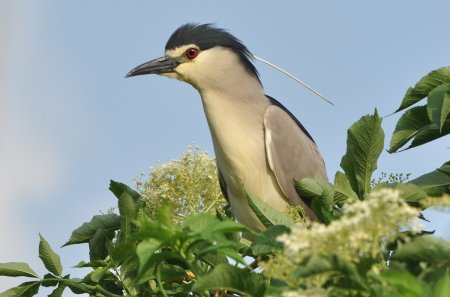Two new Ramsar Sites in Ukraine
Ukraine has designated Cheremske Bog and Sim Maiakiv Floodplain as Ramsar Sites. There are now 35 Sites in the country.
Cheremske Bog (Site no. 2272), located between the Prypiat, Styr and Stokhid rivers, includes mesotrophic mires, swampy forests and two glacial karst lakes. The Site supports a large number of rare plant and animal species listed in the national red list of Ukraine, and is particularly important for some species as it is located on the southern limit of their distribution. Sphagnum-sedge vegetation, areas of sedge-reed associations, sparse pine and common birch forests prevail on the mires. Occupying nearly one-third of the mire, the nationally red-listed Scheuchzeria palustris predominates among marsh vegetation. 11 rare vegetation communities can be found on the Site.
Cheremske Bog plays an important role in maintaining the hydrological regime of the northern and central Western (Polesie) region as well as in groundwater recharge and flood control. The absence of human activities has left the mire in a near-natural state, and it serves as a model for studies of wetlands and their geological, geomorphological and succession processes.

Sim Maiakiv Floodplain (Site no. 2273) on the lower Dnipro (Dnieper) River is composed of a unique karst system which is atypical of southern Ukraine and its flat steppe areas. A deep tertiary river channel with a small steppe river forms a unique complex of floodplain forests, wet meadows and reed beds where it meets the Kakhovka reservoir.
The wetland constitutes a unique refugium for biodiversity in the steppe region: 137 species of birds, 24 species of mammals, 47 of fish, 690 of insects and 326 species of plants have been recorded at the Site. The Site is on one of Eastern Europe’s largest transcontinental migration routes and provides important nesting as well as foraging grounds for many waterbirds.
The karst system is important for groundwater recharge and discharge, for the provision of fresh drinking water for the local population. The livestock and agricultural practices in the surrounding areas depend upon the stability and quality of water from the reservoir and the steppe river. The Site is one of the few places in the lower Dnipro region where traditional basket weaving is preserved.
The main threats to the ecological character of the Site relate to drainage, agriculture and housing and urban areas. The management plan of the “Velykyi Luh” National Nature Park covers all of the Ramsar Site.